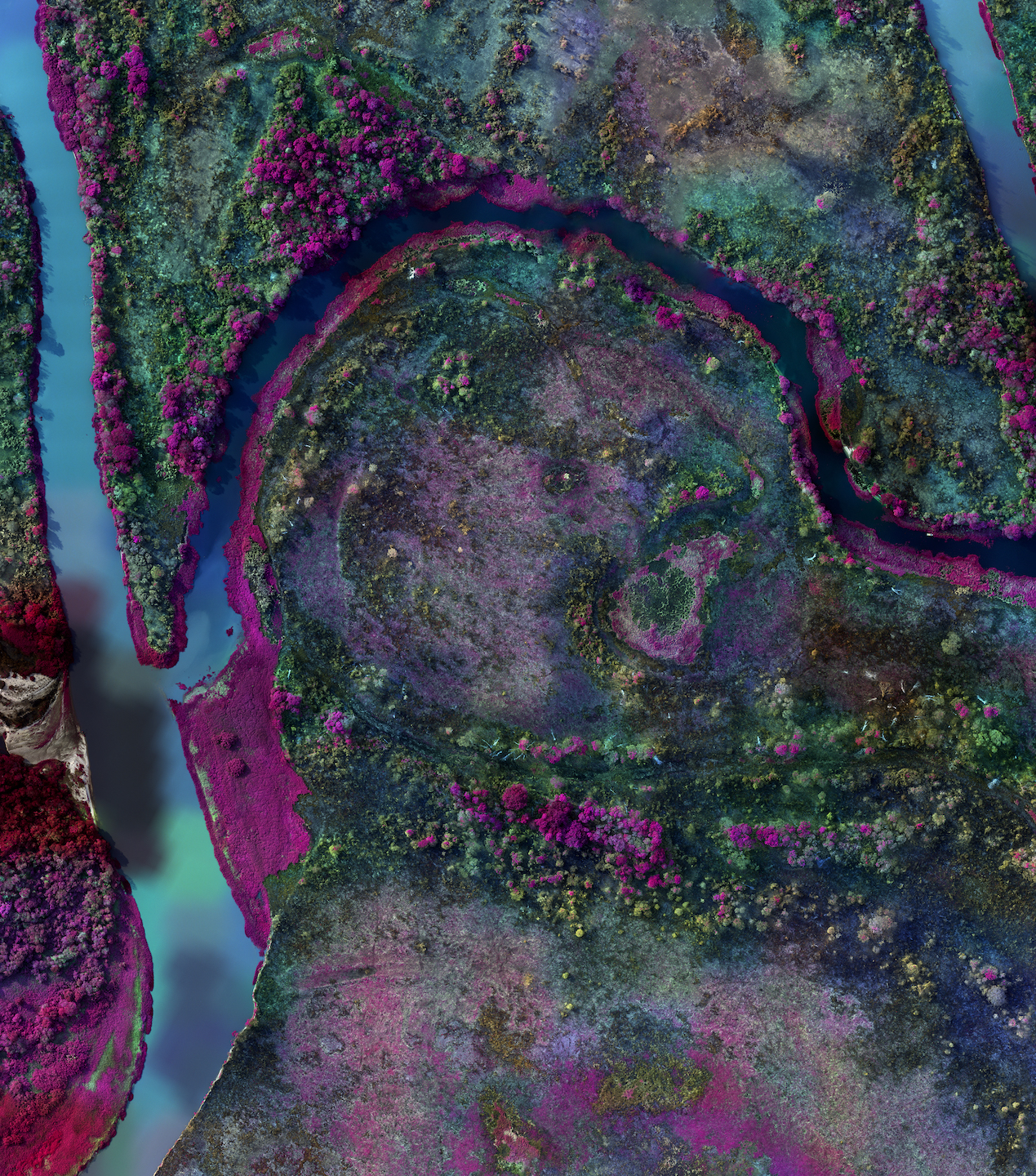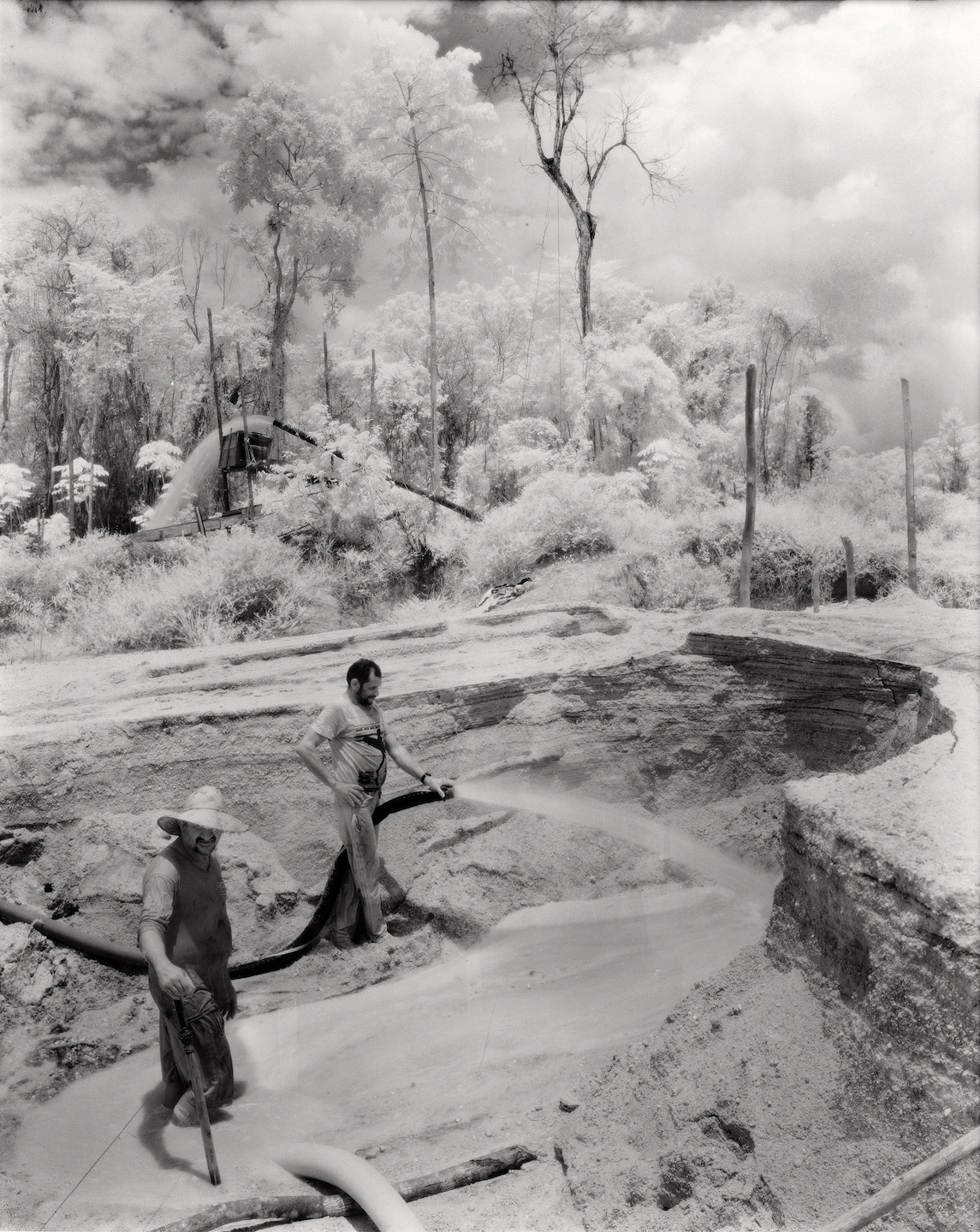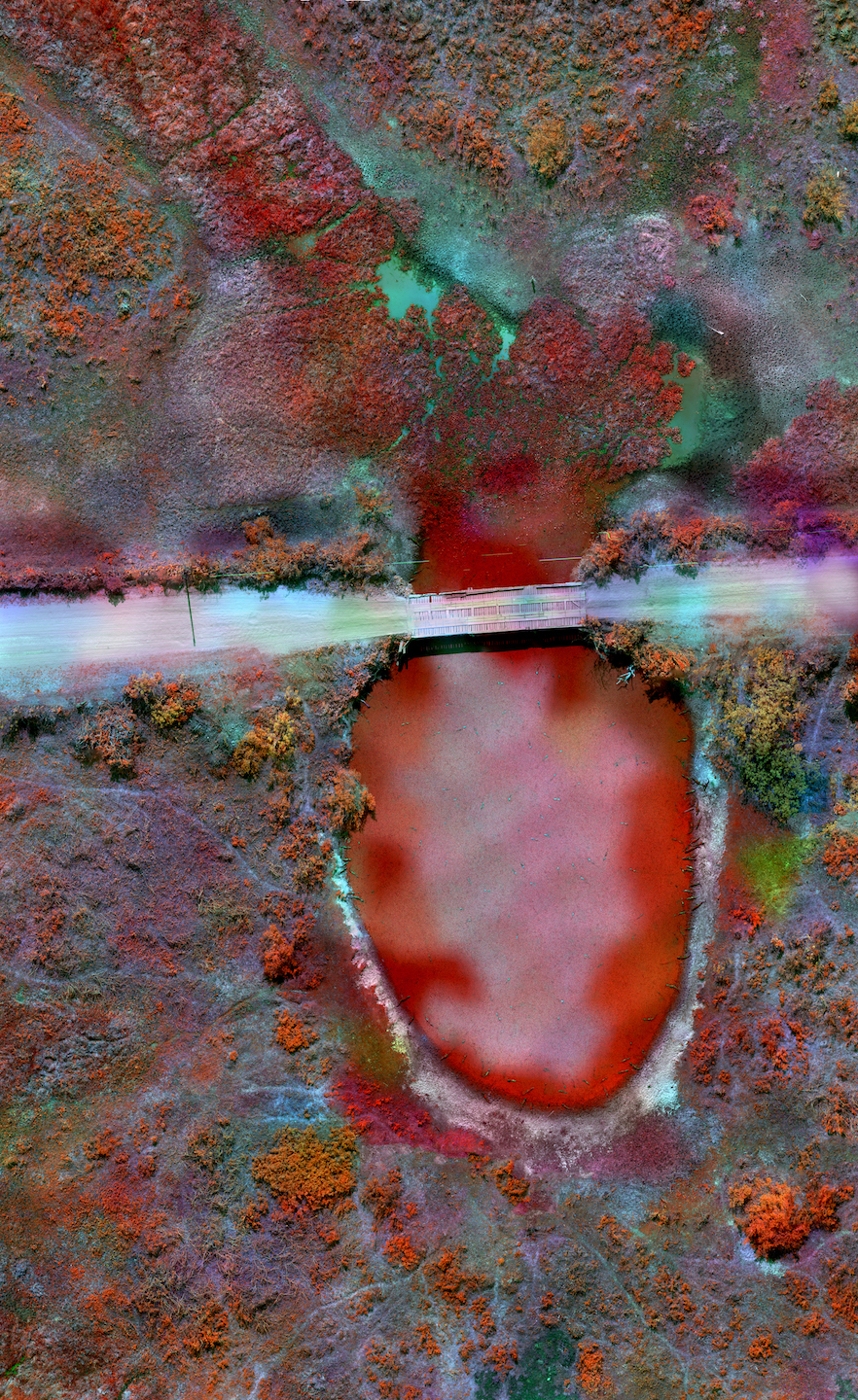Infrared Images Capture the Mass Destruction of the Amazon Rainforest
December 17, 2020It’s hard to articulate the scale of destruction being wrought upon the Amazon, but here are some topline figures to give an idea.
Between 2000 and 2018, deforestation in the Amazon wiped out eight percent of the rainforest, destroying an area larger than Spain. Since the turn of the millennium, more than 198,000 square miles have been lost—more than 4,200 square miles of which were razed between August 2019 and July 2020 alone, the highest level of deforestation since 2008. And last December, Carlos Nobre, a climate researcher at the University of São Paulo, warned that “if the tree mortality we see continues for another 10 to 15 years, then the southern Amazon will turn into a savannah.”
The reasons for such rampant destruction are manifold, but leading contributions are global warming and large-scale burning—the latter of which can mostly be attributed to the anti-environmentalist agenda of Brazil’s far-right president, Jair Bolsonaro. Bolsonaro’s policies are informed by a thirst for development: he encourages deforestation to clear space for agriculture and mining, and blocks the work of environmental groups who might otherwise intervene to protect the rainforest.
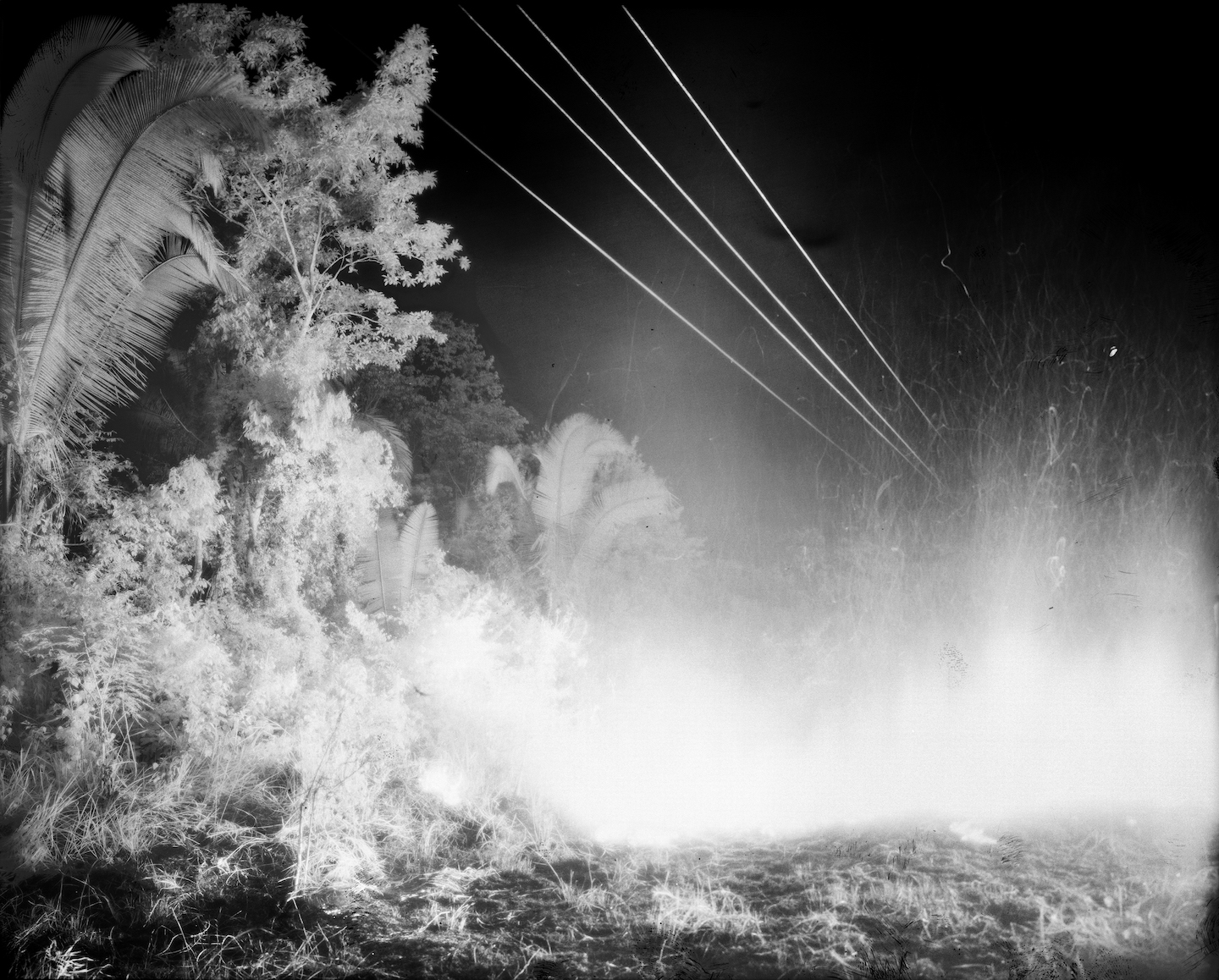
This is a problem, for far more than just the obvious reasons. The Amazon is home to about three million species of plants and animals and one million indigenous people. But within its trees it also stores as much as 76 billion tonnes of carbon—making it a valuable carbon “sink” that traps CO2, emits oxygen and slows the pace of global warming.
The so-called “lungs of the world” are shrinking, and the implications could be disastrous.
Meanwhile, more fires are tearing through Brazil’s neighbouring Pantanal, the world’s biggest wetland, than during any other year since records began. The UNESCO heritage site has seen a 220 percent jump in blazes from 2019, while illegal deforestation in the biome more than doubled in the first six months of this year. Experts have noted that the degradation of both the Amazon’s and the Pantanal’s biomes are closely interconnected.
Photographer Richard Mosse travelled to the imperilled Amazon and Pantanal in direct response to Bolsanaro’s wanton disregard for the region, following media reports he’d seen in 2019. Armed with a custom-built multispectral camera that captures bandwidths of light otherwise invisible to the naked eye, he set out to tell the story of this ecological disaster in a new and never-before-seen way: going beyond the data to visually articulate the extent of the environment’s ongoing devastation. VICE World News spoke to him about the project.
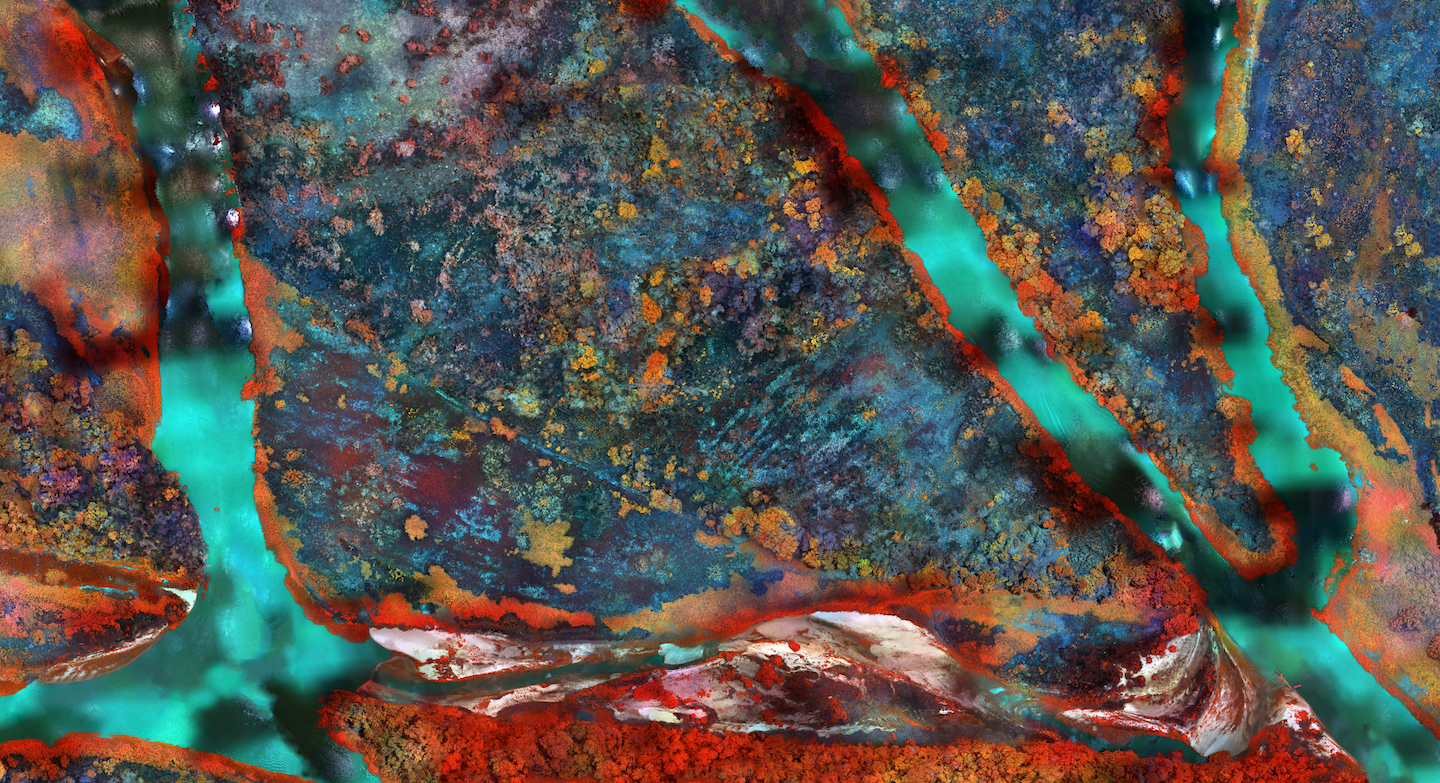
VICE: Hey Mosse, can you tell me what inspired this project?
Mosse: I was very moved and saddened last summer by reports in the media about widespread burning of the Amazon rainforest. At that stage, I had been working in the cloud forests of Ecuador on a separate but related project called “Ultra”, taking highly detailed photographs of a microscopic universe of fluorescent biomass, so I had already spent quite some time looking very closely at what we stand to lose.
A natural progression from there, I felt, was to move from the micro to the macro, to widen the lens, and begin documenting sites of environmental crimes and destruction.
What are some of the most memorable things you saw while working on this?
Words fail me. The scale of the burning is unimaginable. The “arc of fire”, as it’s known, spans from Bolivia, through the Brazilian state of Mato Grosso, across Rondônia, into Amazonas all the way to Para, which is about the distance from the northern US border with Canada to its southern border with Mexico.
The arc of fire is not a new phenomenon; it has encroached ever further into the primary forests of the Amazon for decades. But the rate of burning has become exponential, spurred on by a perfect storm of economic and political factors.
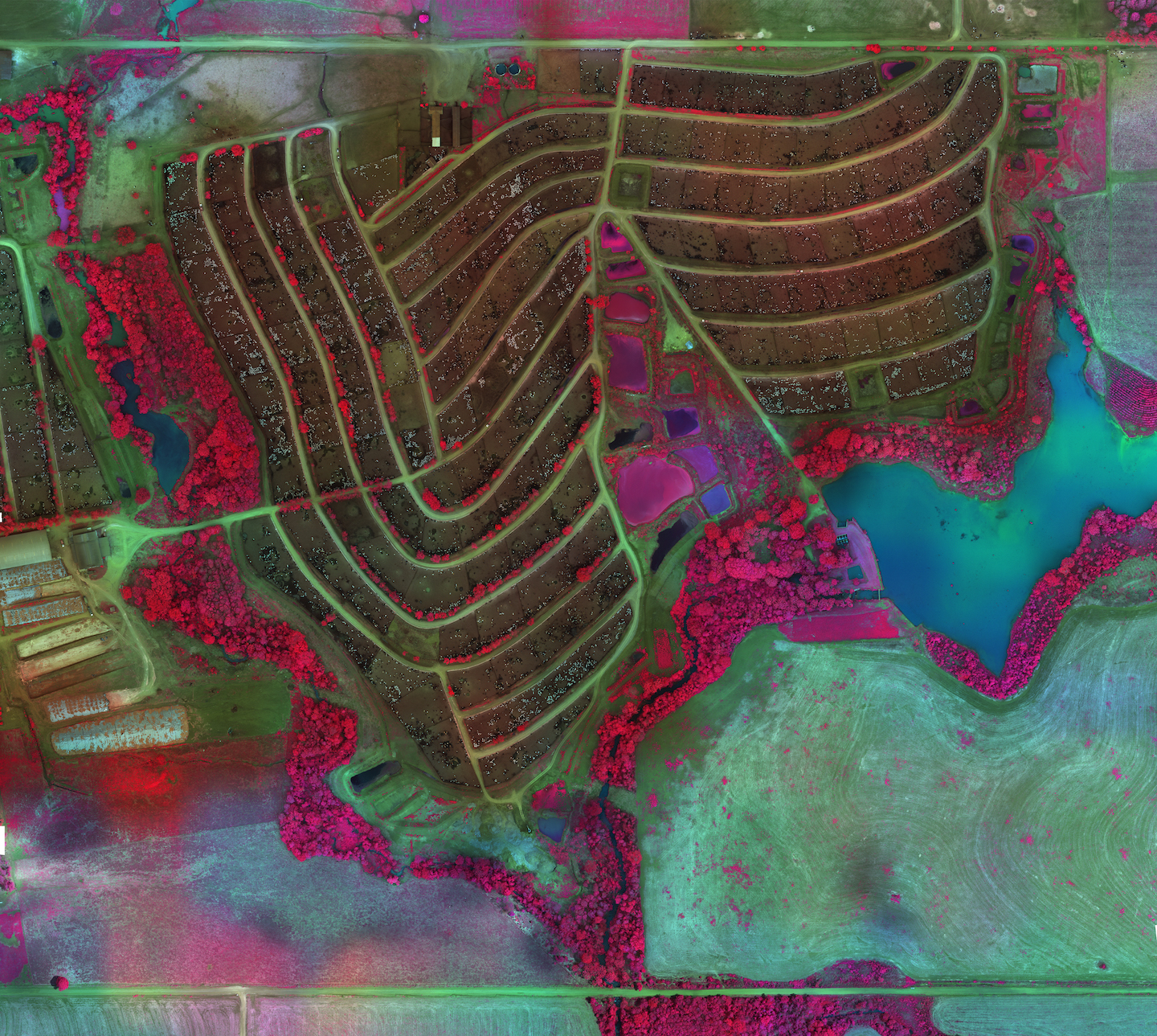
The scale of it, like so many aspects of global heating and climate change, is in many ways beyond human perception and imagination. It can be more easily described with quantitative statistics and scientific modelling but very challenging to infer qualitatively, as a storyteller or artist.
I can tell you that these are some of the most tragic landscapes I have ever seen—and I’ve seen more than my fair share. These areas are warzones. As UN Secretary General António Guterres recently declared, “Humanity is waging war on nature. This is suicidal.”
Agricultural and mining practices have turned some of the most biodiverse paradise landscapes on Earth into something resembling nuclear winter. The rainforest’s intense colours and sounds have been rendered into a dead silent monochrome landscape of ash and charred boughs with the crisped, asphyxiated bodies of primates, sloths and other animals frozen in their attempts to escape. I cannot find the words to do it justice.
What can you tell me about the imaging equipment you used? How did that allow you to capture something that hasn’t been seen before?
In my search to find a lens wide enough to take this vast subject in, I realized that environmental scientists use very specific kinds of remote sensing camera technologies that capture numerous spectral bandwidths of reflected light. These cameras, carried in satellites orbiting the Earth’s surface, capture large amounts of data that can be interpreted using geographic information systems (GIS) software in order to create maps containing environmental information.
This data is then used by scientists to understand the scale and velocity of deforestation, chart aspects of shifting climate, predict tipping points, etc. And the satellite camera technology that generates the data is called multispectral photography.
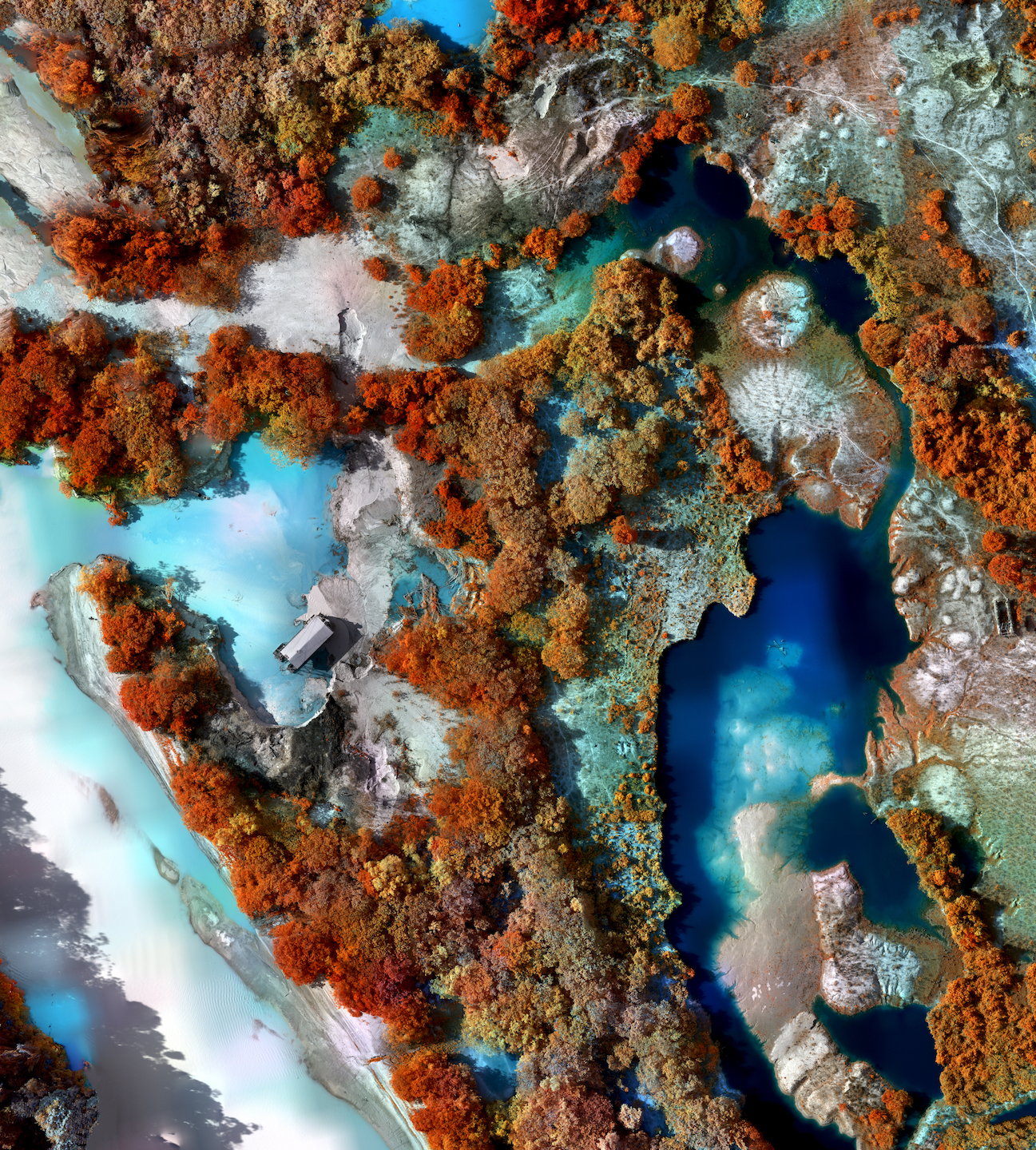
Interestingly, airborne multispectral cameras are also used widely in agribusiness and mineralogy, to reveal the health of crops and drainage patterns, or to pinpoint rare earth minerals in the land. These two industries are responsible for almost all of the Amazon’s deforestation. So the medium is simultaneously used to help us perceive the scale of ecological destruction in the Amazon, while being exploited by those invasive industries most responsible for this damage.
I wished to try to harness multispectral photography to reveal traces of the Amazon’s destruction that a conventional camera may not be able to register. To do this, I have been working with a drone mounted multispectral camera to create orthographic photos that map sites of environmental crimes, or image topographies of ecological degradation. The resulting prints offer a visually expressive way of describing Man’s impact on the environment.
Talk to me about the idea of providing black-and-white portraits of the perpetrators and victims of environmental degradation next to the photos of the degradation itself. Why do you think it's important to add that human element, and to hold individual people accountable for mass environmental destruction?
Maps feel inherently impersonal, of course. The human figure, if it can even be seen in the landscape, is captured from far above, becoming little dots. But man’s trace upon the land is made clear. To balance this, I wished to create a kind of parallel series which is very personal.
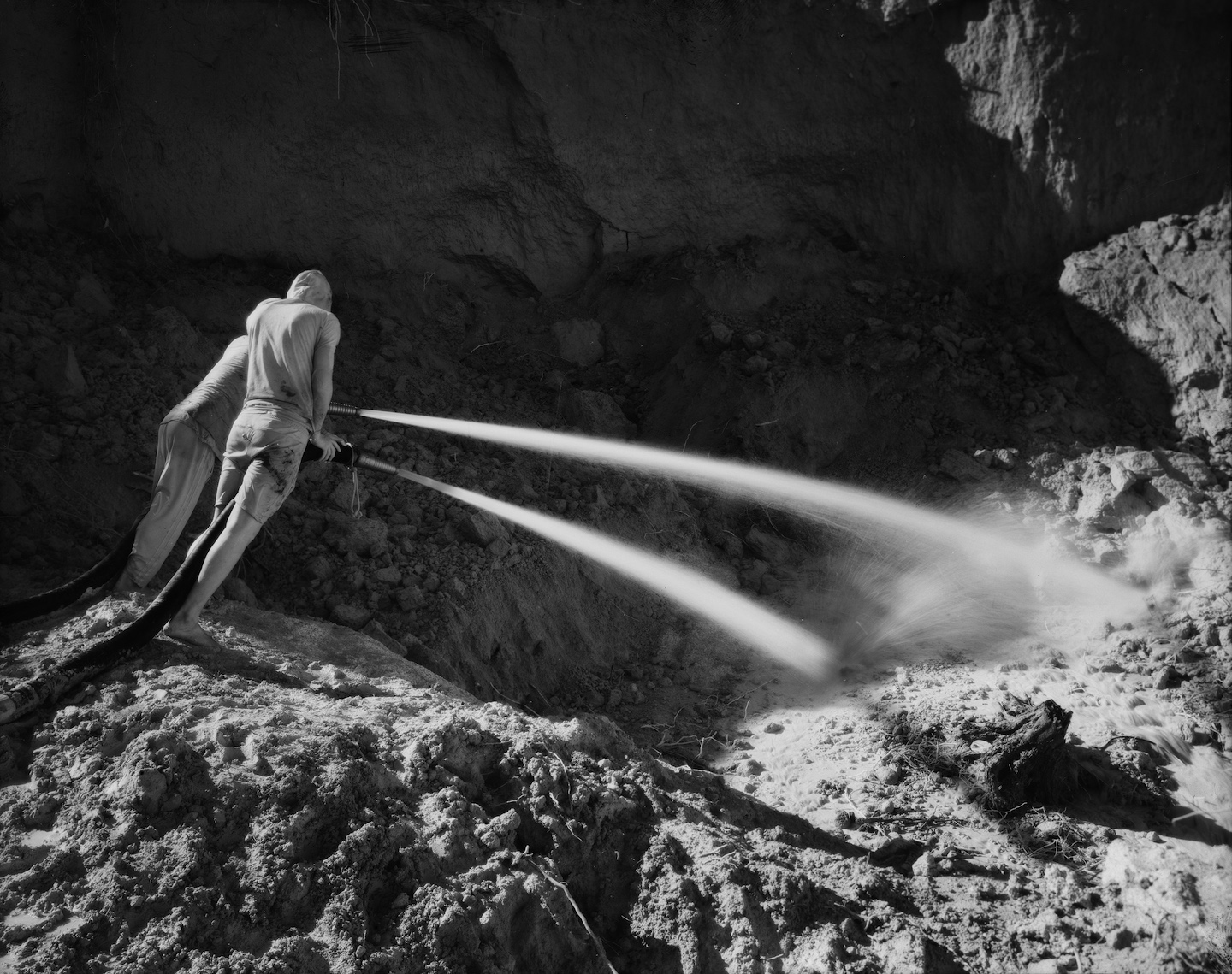
This monochrome series was captured using a near-extinct kind of black and white infrared film stock named Kodak HIE that is incredibly vulnerable to heat degradation. It felt like an interesting way to try to express visually the phenomenon of global heating. Bringing this film into the extremely hot and humid environment of the Amazon basin to photograph the burning rainforest, sometimes from quite near the flames, was an invitation to allow its highly sensitive photographic emulsion to become materially degraded by these environmental conditions.
The resulting patina of environmental damage—the scratches and tears; the weeping emulsion; the accidental fingerprints; the fogging—is all immensely subjective compared with the more objective scientific elements created by the ten-band multispectral camera.
It’s part of my attempt to show the viewer the difficulties, on the one hand, of photographing the vast and abstract narrative of ecocide, while on the other hand showing photography’s power to reveal and understand the scale of Man’s exploitation of the environment.
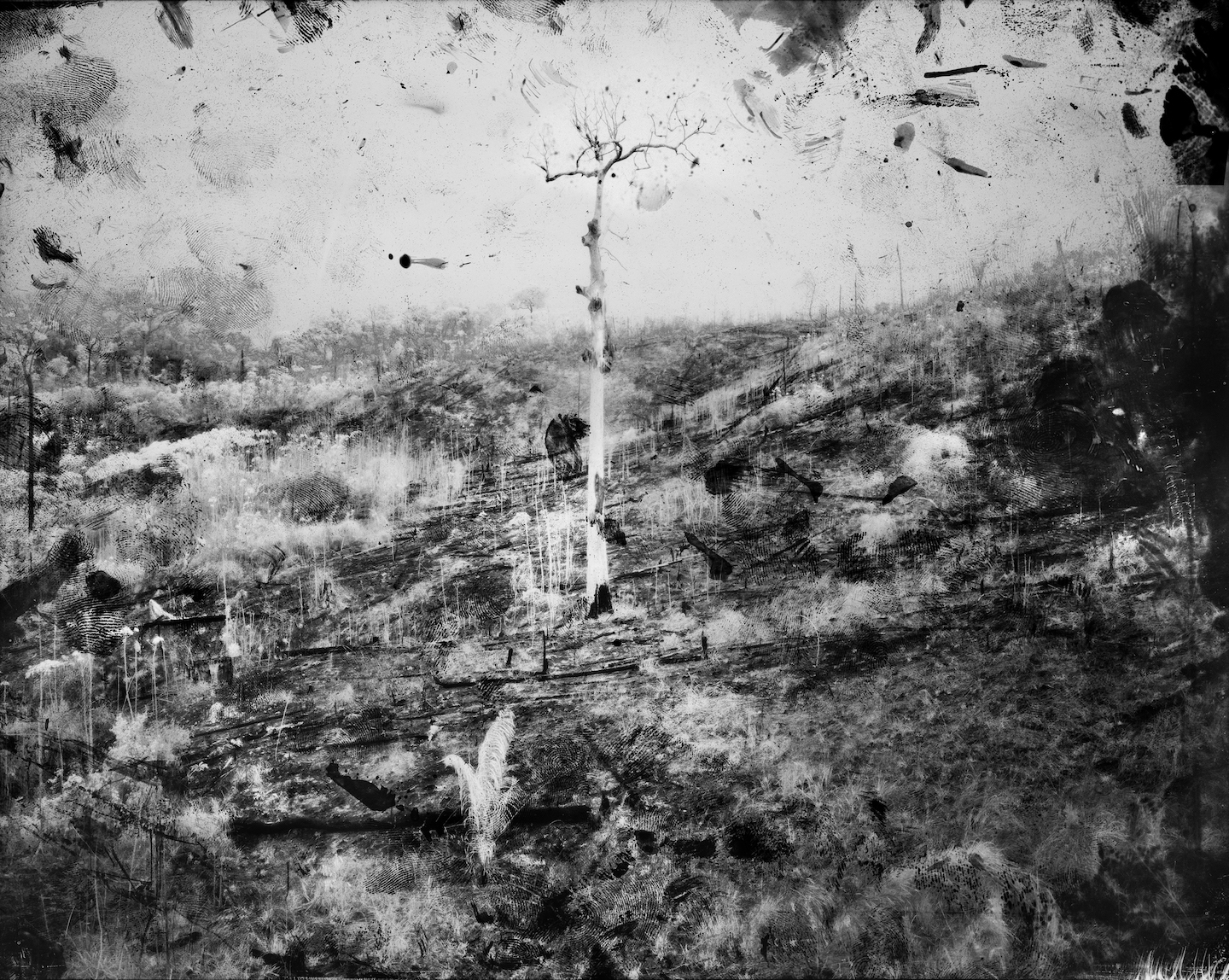
When talking about things like environmental devastation and climate change, what is the impact of art and photography as opposed to hard science? Or to put it another way: how important is it to show, rather than tell?
The stories we tell are absolutely crucial to creating meaningful change. We need only look at how dramatically the narratives of climate denial—stories with little basis in truth—have obstructed our society’s rational response to this exponential catastrophe for decades.
As Naomi Klein points out in her book This Changes Everything, as recently as the mid-1980s both Republicans and Democrats could agree that climate change was real and something must be done about it. But the spin of think tanks and lobbyists funded by gas and oil industry billionaires has fostered an insidious culture of denialism that has split society and obstructed rational emissions regulations.
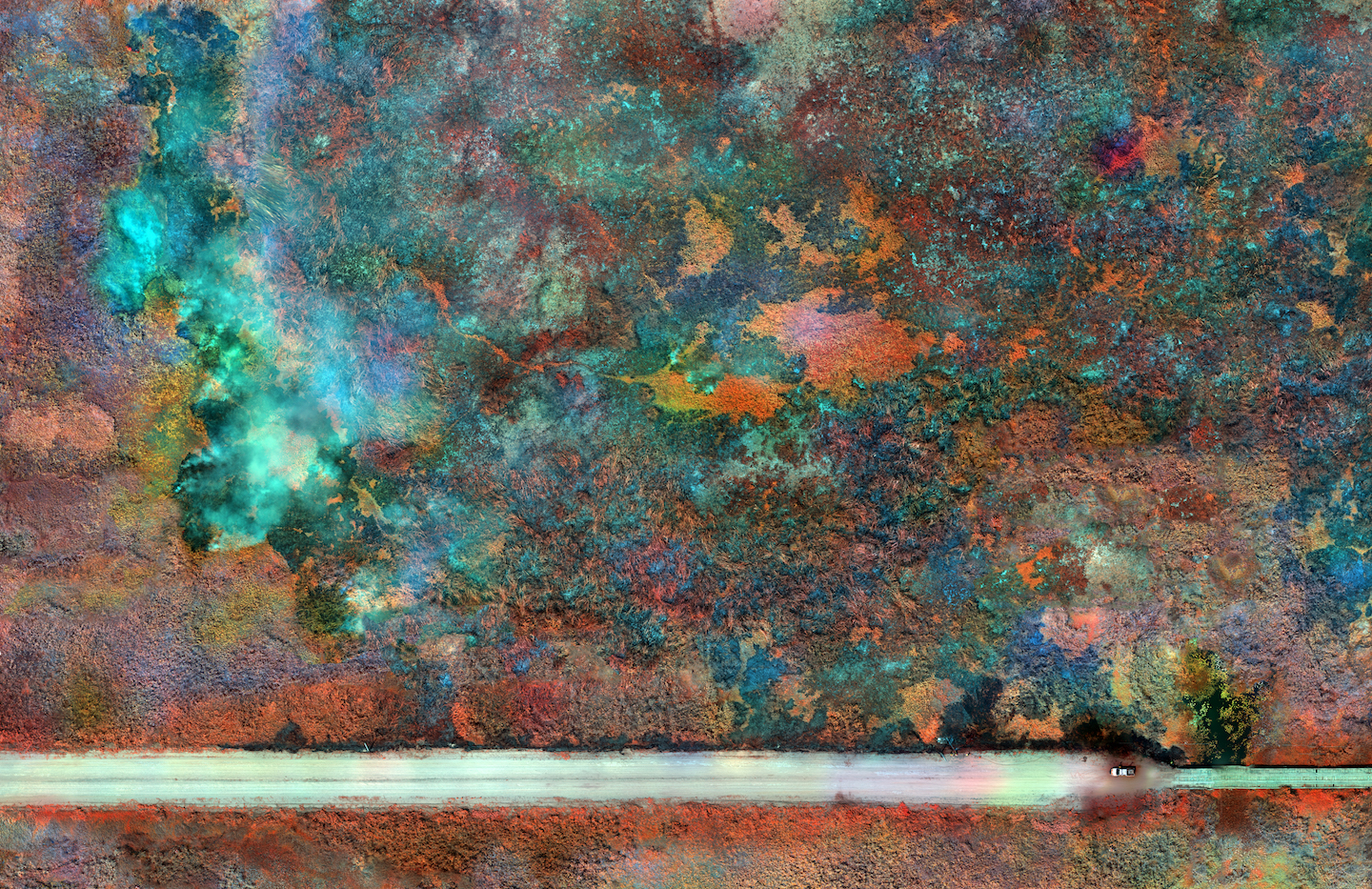
Decades later, these narratives are widespread in the United States and have, in the interests of a wealthy few, wasted the most precious years we had to turn this around. That’s a result of storytelling.
We must begin to convey these narratives more powerfully—to challenge climate denialism, apathy and inaction in more compelling, urgent and impactful ways—to make people feel something. Because that’s our power, as artists and as storytellers: we have the ability to make people feel things in new and original ways.
The data is in; the reports have been written; the writing is on the wall. This ship has almost sailed.
More photos below. Interview by Gavin Butler. Follow him on Twitter
These works will be the subject of Richard’s solo exhibition at Jack Shainman gallery, New York City, from April 8-May 15, 2021
